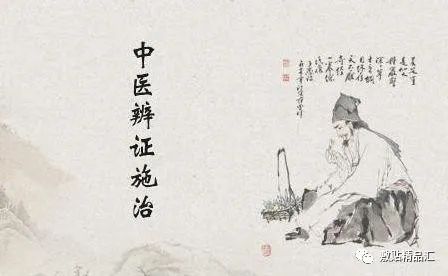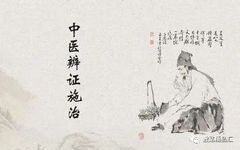Summary of the Eight Principles: What do Yin, Yang, Exterior, Interior, Cold, Heat, Deficiency, and Excess mean?

The Eight Principles—Yin, Yang, Exterior, Interior, Cold, Heat, Deficiency, and Excess are the main components of TCM diagnosis. Through clinical practice, utilizing the four diagnostic methods, we analyze and summarize the disease conditions according to the progression of the illness, categorizing the identified syndromes into eight types (the Eight Principles). Each category has its representative characteristics, used to determine the nature of the disease, leading to accurate diagnosis, and subsequently to appropriate prescriptions and treatments for satisfactory therapeutic effects.
In the context of internal injuries and miscellaneous diseases, the differentiation is based on the organs; in external pathogenic diseases, the differentiation of cold damage uses the six meridians method; while for warm diseases, the differentiation involves the three burners and the Wei, Qi, Ying, and Blood methods.
The development of a disease generally directly affects the changes in the body, so symptoms, tongue coating, and pulse can all be analyzed using the Eight Principles, thus determining the nature of the pathological changes, the depth of the disease location, and the dynamics of the pathogenic and righteous Qi, to infer prognosis and outcomes.
Of course, the application of the Eight Principles is not isolated or static, but rather interrelated and causative, summarized based on the interactions between the righteous and pathogenic Qi.

Next, we will discuss the differentiation of Yin and Yang, Exterior and Interior, Cold and Heat, and Deficiency and Excess:
1. Yin and Yang Differentiation
Yin and Yang represent the opposing yet unified aspects of all things. In the Eight Principles, Exterior, Heat, and Excess are Yang syndromes; Interior, Cold, and Deficiency are Yin syndromes. Therefore, Yin and Yang essentially serve as the overarching principles within the Eight Principles. Generally, patients with Yang syndromes exhibit more heat and excess; those with Yin syndromes tend to show more deficiency and cold.
1.1 Yin Syndrome
From observation, a patient with Yin syndrome may present with a dull complexion, lack of energy, fatigue, sluggish movements, a preference for lying down, a desire for quietness, speaking little, a low voice, fear of cold, a preference for warmth, cold extremities, a pale tongue with a white, greasy coating, and a weak, slow pulse.
1.2 Yang Syndrome
Patients with Yang syndrome typically have a red complexion, bright eyes, high fever, thirst, agile movements, irritability, dry and cracked lips, loud and forceful speech, coarse breathing, dry and foul-smelling stools, red tongue with a yellow, thick coating, and a rapid, strong pulse.
2. Exterior and Interior Differentiation
Exterior and Interior refer to the depth of the disease location. When the six excesses invade the body, if the external pathogen is still affecting the skin and hair, it is considered an Exterior syndrome; if the pathogen penetrates inward or if the disease originates internally, it is classified as an Interior syndrome.
2.1 Exterior Syndrome
When the six excesses harm the skin, symptoms may include headache, aversion to cold, nasal congestion with excessive mucus, body aches without sweating (or with sweating), normal bowel movements, a thin white tongue coating, and a floating, tight or rapid pulse.
2.2 Interior Syndrome
Interior syndrome refers to diseases that have penetrated inward or originated internally. For example, in cases of external pathogens penetrating inward, such as in Yangming organ syndrome, symptoms may include fever, sweating, irritability, abdominal distension with tenderness, dry stools, delirium, and a strong pulse; or in warm diseases where heat invades the heart, symptoms may include confusion, thirst, and a rapid pulse. Diseases caused by deficiency of Qi and blood, or emotional injuries also fall under Interior syndrome.
3. Cold and Heat Differentiation
Cold and Heat represent two distinctly different natures of disease. Cold syndromes are caused by the body being affected by cold, often resulting in diminished function; conversely, heat syndromes typically manifest as excessive function.
3.1 Cold Syndrome
Symptoms may include a pale complexion, cold extremities, lack of thirst, fatigue, loose stools, clear and frequent urination, a pale tongue with a slippery coating, and a slow, weak pulse.
3.2 Heat Syndrome
Symptoms may include fever without aversion to cold, aversion to heat, irritability, thirst, a desire for cold drinks, red and hot urine, dry and foul-smelling stools, a red face and dry lips, a red tongue with a yellow coating, and a rapid pulse.
4. Deficiency and Excess Differentiation
Deficiency refers to the deficiency of righteous Qi, while Excess refers to the presence of pathogenic factors. Generally, robust individuals who become ill for the first time tend to have Excess syndromes, while those who are weak and have been ill for a long time often present with Deficiency syndromes.
4.1 Deficiency Syndrome
Physically, patients may appear weak, with a pale complexion, brittle nails, shortness of breath, fatigue, a weak voice, a preference for lying down, reduced appetite, lack of energy, timidity, forgetfulness, diarrhea with undigested food, cold extremities, dizziness, palpitations, insomnia, and a pale, swollen tongue with teeth marks, and a weak pulse.
4.2 Excess Syndrome
Commonly seen are both Exterior and Interior Excess syndromes.
(1) Exterior Excess syndrome occurs when external pathogens obstruct the skin, preventing lung Qi from dispersing, presenting with fever, aversion to cold, body aches without sweating, and a floating pulse.
(2) Interior Excess syndrome, which is heat-related, may present with a red complexion, coarse breathing, fever, irritability, delirium, dry stools, foul-smelling diarrhea, red and hot urine, a yellow, thick tongue coating, and a strong pulse. Cold-related Interior Excess syndrome may present with abdominal distension, cold extremities, a slow pulse, and a white, slippery tongue coating, requiring warming treatment.
The Eight Principles discussed above are categorized for clarity, but they should not be viewed in isolation; they must be integrated, distinguishing primary from secondary, and carefully analyzed to be effectively applied in clinical practice.
In patients, it is often the case that both Exterior and Interior are deficient or excessive, or both are cold or hot, with combinations such as Exterior cold and Interior heat, Exterior heat and Interior cold, or Exterior deficiency and Interior excess, and vice versa.
In heat syndromes, there may also be true cold and false heat phenomena, such as thirst without a desire to drink, a hot body but a preference for clothing, a red face with cold feet, agitation and weakness, a pale, greasy tongue, and a weak pulse; or true heat and false cold patients, who feel cold but do not want to wear clothes, with cold extremities but a hot body, foul-smelling black diarrhea, a dry white tongue, and a strong, wiry pulse.
In the differentiation of Deficiency and Excess, attention must be paid to the duration of the illness, the strength of the body, and the age of the patient. Sometimes, Deficiency and Excess may be mixed, where the surface appears to be Deficient but is actually Excess, or vice versa. As the ancients said: “Great Excess may appear as Deficiency, and true Deficiency may have a strong appearance.”
 Copyright Notice: The article is sourced from the internet. If there is any infringement, please contact us for removal.
Copyright Notice: The article is sourced from the internet. If there is any infringement, please contact us for removal.
Cooperation/Communication/SubmissionWeChat: 13963982958
▼ For more exciting recommendations, please follow us ▼ Give time to reading
Give time to reading
Quality Patch Application One-Stop Ordering Platform
Click below“Read the original text”to see more
↓↓↓

